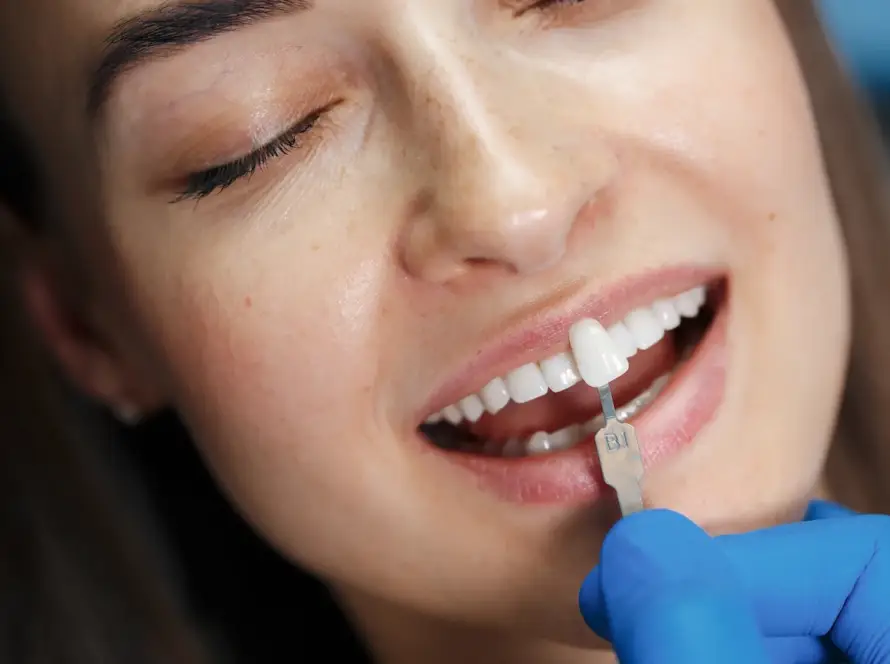Dental bone grafting is a critical procedure used in dentistry to restore lost or damaged bone in the jaw. It is commonly performed before dental implant surgery to ensure that there is sufficient bone structure to support the implant. The technique involves transplanting bone or similar materials to stimulate new bone growth in the affected area.
This procedure is usually necessary in cases where bone loss has occurred due to periodontal disease, tooth extractions, or facial trauma. It can also be used to correct jaw deformities or to enhance the aesthetics of the smile. By providing a solid foundation for dental implants, bone grafting enables patients to regain proper chewing function and confident smiles.
Bone grafting can be performed using various materials, such as autografts (bone taken from the patient’s own body), allografts (bone from a human donor), xenografts (bone from an animal source), or synthetic materials. The choice of grafting material depends on the patient’s specific condition and the dentist’s professional judgment.
In general, the dental bone grafting process involves cleaning the area around the recipient site and preparing it for the graft. The graft material is then placed into the site and secured in place to promote healing and integration into the surrounding bone. Over time, the graft material is gradually replaced by the patient’s natural bone, resulting in a stronger and more stable jaw.
Dental bone grafting is generally a safe and well tolerated procedure, but it may involve some temporary discomfort and swelling. Patients can expect a healing period of several months before the graft fully matures, during which they may need to follow specific post operative care instructions provided by their dentist.
In conclusion, dental bone grafting is a technique widely used in restorative dentistry to rebuild bone in the jaw and provide a stable foundation for dental implants. It plays a crucial role in improving oral health and enhancing the quality of life for patients with bone loss or deformities. Dental professionals can determine the most appropriate grafting technique and materials based on the individual needs of each patient.
Types of Dental Bone Grafts
- Autografts: Autografts involve using bone from the patient’s own body, typically taken from the hip, jaw, or chin. This is considered the gold standard for bone grafting procedures as it provides excellent bone quality and has a high success rate. However, the procedure requires an additional surgical site and may result in postoperative pain and longer healing time.
- Allografts: Allografts use donated bone from a human bone bank. This type of grafting material is processed, sterilized, and freeze dried to remove any possible contaminants. Allografts offer a natural matrix for new bone formation and are commonly used for minor bone defects. They eliminate the need for a second surgical site, but the risk of immune rejection is present.
- Xenografts: Xenografts involve using bone graft material derived from animals, typically bovine (cow) or porcine (pig) sources. The bone is processed and sterilized to minimize the risk of disease transmission. Xenografts provide a scaffold for new bone growth but may be associated with a slight risk of an immune reaction.
- Alloplastic grafts: Alloplastic grafts use synthetic materials, such as hydroxyapatite, tricalcium phosphate, or bioactive glass, as a substitute for natural bone. These materials are biocompatible and provide a framework for new bone to grow. Alloplastic grafts eliminate the need for harvesting bone from another site, but long term stability and remodeling can be a concern.
- Combination grafts: Combination grafts involve the use of two or more different types of graft materials. This approach aims to combine the benefits of each material and promote better bone regeneration. For example, an autograft may be combined with an allograft or xenograft to provide both structural support and the ability to induce new bone formation.
It’s important to note that the choice of bone graft material depends on various factors, including the size and location of the bone defect, the patient’s overall health, and the dentist’s preference and experience. Thus, a comprehensive evaluation by a dental professional is essential to determine the most suitable type of bone graft for each individual case.
Reasons for Needing a Dental Bone Graft
There are several reasons why a patient may require a dental bone graft procedure. Understanding these reasons can help patients better grasp the importance of this procedure. The following are common factors that may necessitate a dental bone graft:
- Tooth loss: When a tooth is lost, the surrounding bone may deteriorate over time due to lack of stimulation. A dental bone graft helps restore and regenerate the lost bone, providing a stable foundation for dental implants or dentures.
- Periodontal disease: Advanced periodontal disease can lead to the destruction of the supporting bone structure. Bone grafting can help restore the damaged bone and prevent further degradation.
- Trauma: Accidents or injuries to the mouth can result in bone loss or fractures. A bone graft may be necessary to repair damaged or broken bones to restore normal oral function.
- Gum disease: Severe gum infections can lead to bone loss around the teeth. A dental bone graft can help regenerate the lost bone and support the affected teeth.
- Dental infections: Certain dental infections can cause damage to the surrounding bone. A bone graft is often required to repair the affected area and promote proper healing.
- Congenital defects: Some individuals are born with inadequate bone structure in the jaw. A bone graft can help augment the existing bone, providing a more stable foundation for dental restorations.
- Sinus problems: In some cases, a dental bone graft may be necessary to preserve or augment the bone in the upper jaw to allow for the successful placement of dental implants.
It is important to consult with a qualified dental professional who can assess your specific situation and determine if a dental bone graft is necessary. By addressing potential bone deficiencies, this procedure can help improve oral health and restore function to the mouth.
The Dental Bone Grafting Procedure
Dental bone grafting is a specialized procedure performed by dental professionals to restore and strengthen the bone in the jaw. This procedure is commonly used in situations where a patient lacks sufficient bone density, either due to tooth loss, gum disease, or injury.
During the dental bone grafting procedure, the dentist or oral surgeon will carefully remove a small piece of bone from another area of the patient’s body, usually the hip or chin, or they may use a synthetic bone graft material. This bone graft is then placed into the area of the jaw that needs to be strengthened or augmented.
The bone graft material serves as a scaffold, encouraging the growth of new bone cells and stimulating the body’s natural healing process. Over time, the patient’s own bone cells will assimilate with the graft, creating a strong and stable foundation for dental implants or other dental procedures.
The dental bone grafting procedure typically requires local anesthesia to ensure the patient’s comfort. The length of the procedure may vary depending on the extent of the graft and the complexity of the case. After the bone graft is placed, the patient will need a healing period of several months to allow the new bone to fully integrate before the next phase of treatment can begin.
It is important to note that dental bone grafting is a specialized procedure that should only be performed by experienced dental professionals. The success of the graft is highly dependent on the skill and expertise of the dentist or oral surgeon, as well as the patient’s commitment to follow post operative care instructions.
If you are considering dental bone grafting, it is advisable to consult with a qualified dental professional who can evaluate your specific situation and provide personalized treatment recommendations. By understanding the dental bone grafting procedure and its potential benefits, you can make an informed decision about your oral health and regain a strong and healthy smile.
Risks and Complications
Although dental bone grafting is generally considered safe and effective, there are potential risks and complications that patients should be aware of. These include:
- Infection: Like any surgical procedure, there is a risk of infection. However, dentists take precautions to minimize this risk by following proper sterilization techniques and prescribing antibiotics when necessary.
- Swelling and discomfort: It is common to experience some swelling and discomfort after a dental bone graft procedure. This can usually be managed with over the counter pain medications and ice packs. However, if the swelling or pain becomes severe or persists for an extended period, it is important to contact your dentist.
- Bleeding: Some bleeding at the graft site is normal after the procedure. Your dentist will provide you with instructions on how to manage this, such as biting down on gauze to apply pressure. If the bleeding is excessive or prolonged, it is important to seek dental attention.
- Failure of graft integration: In rare cases, the bone graft may not integrate successfully with the existing bone. This can result in the failure of the graft and the need for additional procedures. Your dentist will monitor the healing process closely to prevent or address any issues.
- Nerve damage: The positioning of nerves near the graft site can pose a risk of nerve damage. This can lead to temporary or permanent numbness or tingling in the affected area. Your dentist will carefully assess the location of nerves and take appropriate precautions to minimize this risk.
- Sinus complications: If a dental bone graft is performed in the upper jaw, there is a possibility of sinus complications. This can include sinusitis, sinus membrane perforation, or sinus infections. Your dentist will evaluate your sinus anatomy and take necessary precautions during the procedure.
It is essential to have a thorough discussion with your dentist before undergoing dental bone grafting. They will assess your specific situation, discuss the potential risks, and provide personalized guidance to minimize complications. By understanding these risks and following your dentist’s instructions for post operative care, you can help ensure a successful and complication free bone grafting procedure.
Alternatives to Dental Bone Grafting
In cases where dental bone grafting is not feasible or preferred, there are alternative treatments available. These alternatives aim to address the issue of insufficient bone density without the need for grafting procedures. While the suitability of these alternatives may vary depending on the specific case, they offer potential options for individuals seeking alternatives to dental bone grafting.
Here are some alternatives to consider:
- Ridge Expansion: This technique involves widening the jawbone to create space for dental implants. It is particularly useful for cases where the jawbone is not wide enough to support an implant. During the procedure, the dentist or oral surgeon carefully makes cuts in the bone and expands it using specialized tools. This allows for the placement of implants without the need for additional bone grafting.
- Sinus Lift: When the upper jaw lacks sufficient bone height due to the presence of the sinus cavity, a sinus lift can be performed. In this procedure, the sinus membrane is lifted, and bone graft material is placed in the area to encourage bone regeneration. This creates a solid foundation for dental implants.
- Block Bone Grafting: Block bone grafting involves the use of a small block of bone graft material, typically taken from the patient’s own body or a donor source, to augment bone volume. The block is securely fixed to the deficient area, providing stability and aiding in bone regeneration.
- Short Implants: Short implants are an alternative for individuals with limited bone height. These implants are specifically designed to address cases where the available bone height is insufficient for traditional implants. They are shorter in length but still provide excellent stability and support for dental restorations.
- Mini Dental Implants: Another alternative to consider is the use of mini dental implants. These implants have a reduced diameter compared to traditional implants and require less bone structure for successful placement. Mini dental implants are suitable for patients with minimal bone density and can be a viable solution for certain tooth replacement needs.
It is worth noting that the suitability of these alternatives depends on various factors, including the individual’s oral health, bone density, and treatment objectives. Therefore, it is crucial to consult with a qualified dentist or oral surgeon to determine the most appropriate treatment option based on the specific circumstances.















